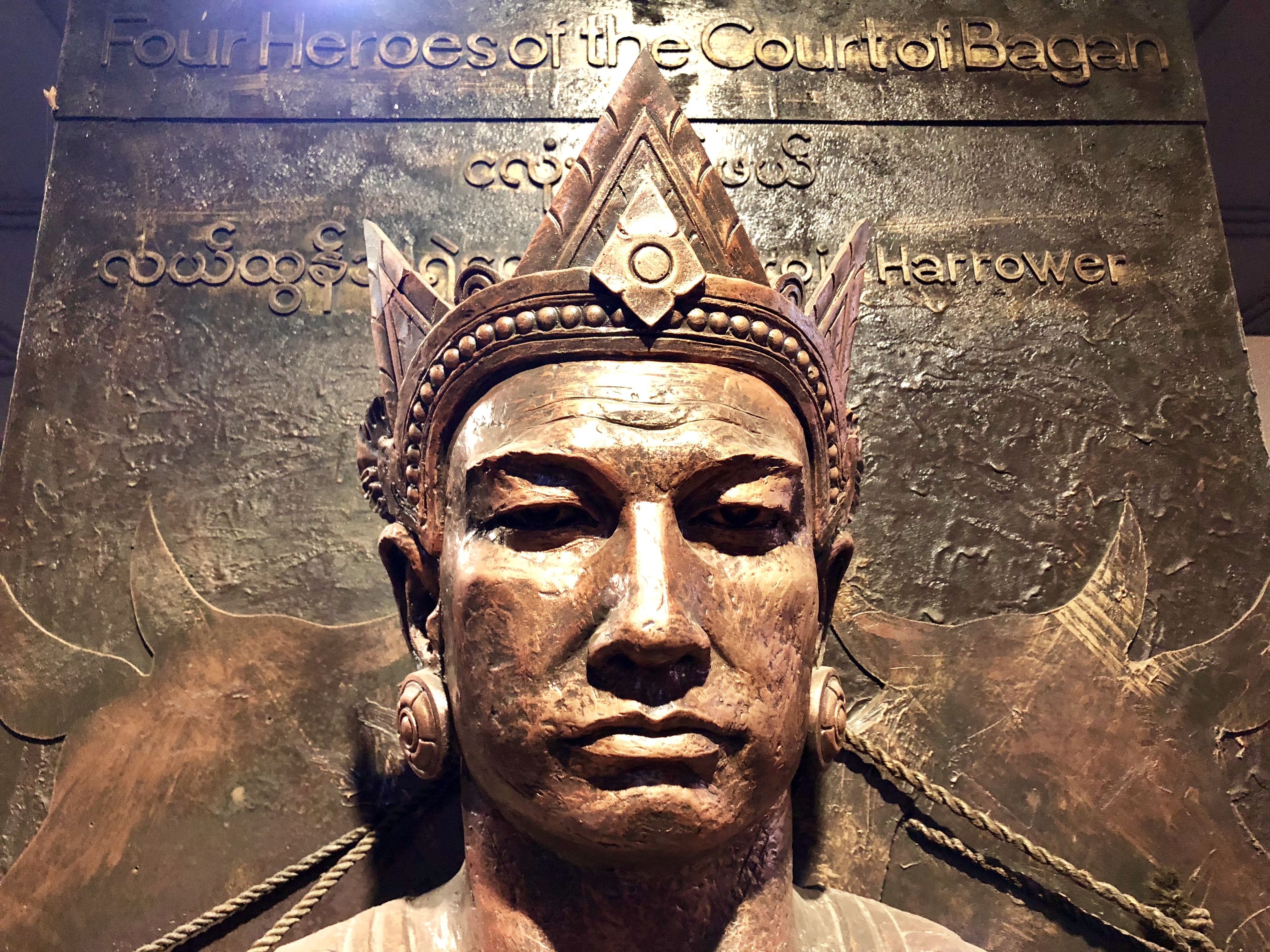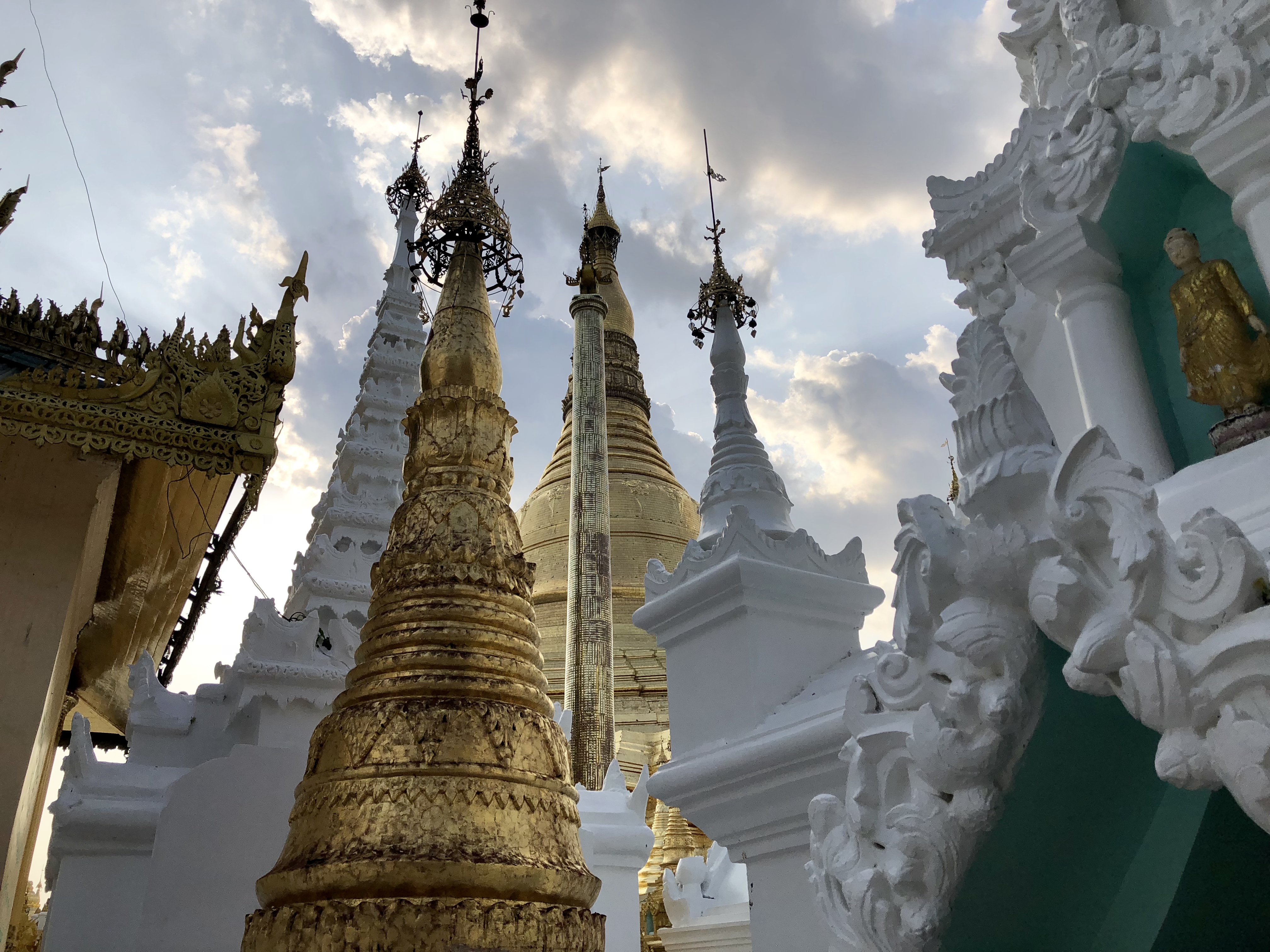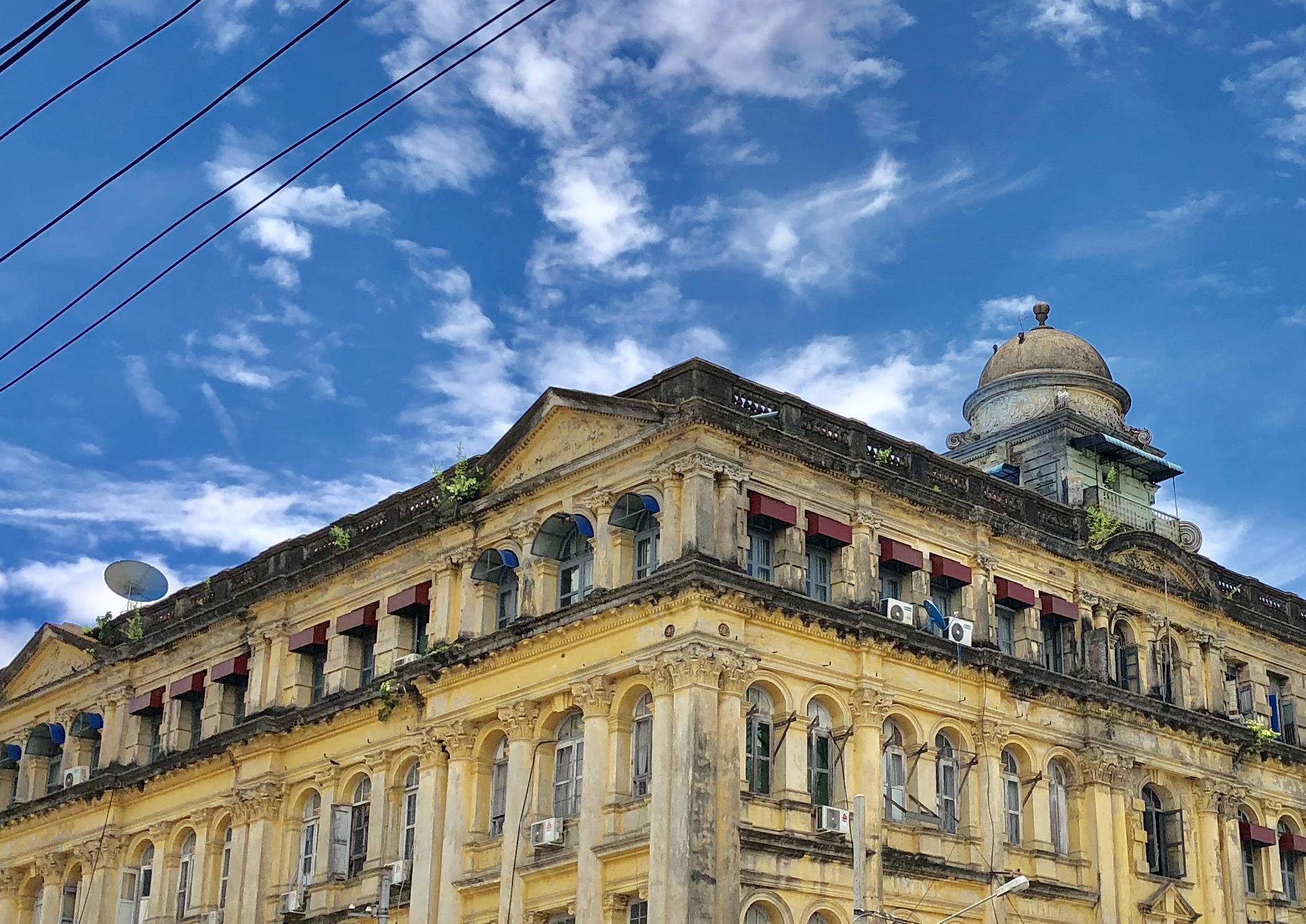Anfang Mai reise ich nach Myanmar. Mein erstes Ziel hier ist die 5 Millionen Metropole Yangon. Laut, chaotisch und mit drückenden Temperaturen um die 40 Grad presst sich die Energie hier regelrecht durch die überfüllten Strassen. Ich fühle mich wie in einem riesigen Kochtopf mit unüberschaubar vielen Zutaten, die aus ganz verschiedenen Epochen zusammengemixt vor sich hin brodeln. Den Hauptstadtstatus musste Yangon zwar vor einigen Jahren an Naypyidaw abtreten, doch im Alltag präsentiert es sich weiterhin als das wirtschaftliche und gesellschaftliche Zentrum Myanmars. Hier befindet sich auch das National Museum des Landes, in welchem man einen umfassenden Eindruck der vergangenen Zeiten bekommt. Auf fünf Stockwerken tauche ich für mehrere Stunden in die Geschichte eines vielfach geknechteten und lang unterdrückten Volkes mit einem vielleicht weltweit einzigartigen ethnischen Abbild ein.
In the beginning of may I’m starting to travel around Myanmar. My first destination is the metropolis of Yangon with a population of about 5 million people. Very noisy, chaotic and with permanent temperatures around 40 degrees the energy here feels like strongly pushed through the crowded streets. I feel like staying in a big pot filled with many unmanageable ingredients mixed up and seetheing. Some years ago Yangon lost the capital status to Naypyidaw, but it presents itself still as the economical and social center of Myanmar. So the national museum of the country, where you can get full impressions of the former times, is located here. At five floors I’m going deep into the history of unique ethnic kinds of people who were enslaved and repressed for a long time.

Von allen gesellschaftlichen Veränderungen blieb die buddhistische Lebenshaltung Myanmars allerdings weitesgehend unberührt. Als landesweites Wahrzeichen für die, alle Gesellschaftsschichten durchziehende, spirituelle Zentrierung erstrahlt in Yangon weithin sichtbar die riesige Shwedagon Pagode. Die Kraft dieses faszinierenden Ortes ist schwer zu beschreiben. Auf mich wirkt sie wie eine Art übergeordnete Verbindung zwischen Himmel und Erde, die meine Seele an ihren göttlichen Ursprung erinnert und mich in universellem Einklang stabilisierend ausrichtet. Und vielleicht ist es genau diese Kraft, welche die Menschen hier alle Schwierigkeiten im Vertrauen überstehen lässt und die eine omnipräsente Demut und Hingabe mit sich bringend, die Unendlichkeit des Seins stetig im Irdischen manifestiert.
But the buddhistic way of life seems to be mostly untouched by any social changes in Myanamar. As a symbol of the spiritual centering in all social layers the giant Shwedagon pagoda is already visible from far away and the power of this fascinating place is difficult to describe. For me it felt like a parent connection between heaven and earth which remembers my soul of their divine origin and supports me to be in harmony with the universe. And maybe it’s exactly this power which let Myanmar people overcome all the difficulties in trust and which manifests the infinity of beeing continuously including an omnipresent devotion and humility.

Im Stadtbild von Yangon hat vorwiegend die britische Kolonialmacht sichtbare Spuren hinterlassen. Besonders im Downtown Stadtteil erhalten zahlreiche, zum Teil dem Verfall preisgegebene, Gebäude die Erinnerung an diese Zeit aufrecht, aber es gibt hier auch einige Teehäuser und Bäckereien in sehr gutem Zustand. Als Europäer erlebe ich dies als ambivalent: Einerseits mag ich die Ästhetik der alten englischen Bauten und die vertraut kulinarischen und kulturellen Einflüsse lassen in mir ein subtil heimisches Gefühl aufkommen. Andererseits bin ich mir aber auch der ethischen Kontroversen dieser Einflüsse auf die ursprüngliche Kultur der Stadt und der damit verbundenen Fremdbestimmung im Leben der Menschen in Yangon bewusst.
Mainly the british colonizers left recognizable marks in cityscape of Yangon. There are a lot of buildings keeping the memories of this time alive in the downtown district. Some of them decaying slowly, but in the center area there are some old styled tea houses and bakeries in good conditions too. As an european I’m experiencing this as an ambivalence: At the one hand I like the aesthetic of the old english buildings and the familiar culinary and cultural influences make me feel subtle home. But on the other hand I’m aware of the ethic controverses of these influences, changing the origin culture and other directing the life of the people in Yangon, too.

Comments are closed.